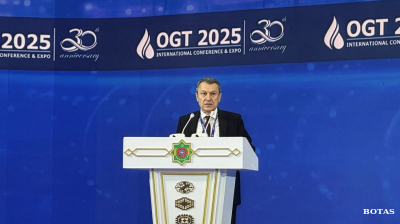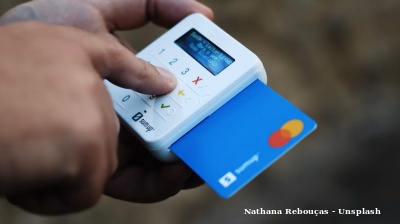When Indonesia’s Finance Minister Purbaya Yudhi Sadewa redirected IDR200 trillion ($12bn) of idle government funds from Bank Indonesia to five state-owned banks, he described the move as “a simple step”. Yet, this apparently straightforward liquidity injection has quickly become one of the most talked-about fiscal moves in President Prabowo Subianto’s first year in office, blending urgency, politics, and simplicity in economic management.
Unlocking dormant funds
In remarks reported by CNBC Indonesia during the Sarasehan 100 Ekonom Indonesia forum on October 28, Purbaya said the decision stemmed from his observation that the economy had slowed in recent years, while the government routinely parked IDR400 trillion – IDR500 trillion annually as Saldo Anggaran Lebih (SAL) - or budget surplus balance. “I thought we should spend it faster, so I returned IDR200 trillion into the economic system,” he said.
The funds, previously sat doing nothing in Bank Indonesia, were distributed to the country’s five state-owned lenders, Bank Mandiri, BRI, BNI, BTN, and Bank Syariah Indonesia (BSI), collectively known as Himbara. According to CNN Indonesia, the allocations were IDR55 trillion each for Mandiri, BRI, and BNI; IDR25 trillion for BTN; and IDR10 trillion for BSI.
Not a big step
Purbaya told CNBC Indonesia that the move was neither sophisticated nor risky. “People say it’s extraordinary, but it’s actually simple, no complicated thinking,” he said.
Initially, the Finance Ministry placed no formal restrictions on how banks should use the low-cost funds. Yet, as he later explained to the same outlet, internal discussions prompted him to codify the process under Finance Ministerial Decree (KMK) No. 276/2025, effective from September 12, to preserve fiscal discipline and transparency.
Coverage from DetikFinance on October 27 highlighted that Purbaya saw an early payoff from the liquidity boost. He said public sentiment toward the economy had improved as people began to feel stronger purchasing power. “People are starting to feel their economic condition improve. They see hope for a better future,” he said, adding that public approval of government performance has risen sharply from September levels.
Supporting that assessment, CNN Indonesia noted that consumer credit demand, especially for vehicle loans, had strengthened both in cities and regional areas, signalling an improvement in Bank Indonesia’s consumer confidence index.
Aiming for momentum, not just relief
Encouraged by the initial results, Purbaya told DetikFinance that he is ready to expand the policy if necessary. “If it’s still not enough, I’ll transfer more into the banking system to keep the economy moving. Don’t worry, I still have plenty of ammunition,” he said.
CNN Indonesia further reported that the Finance Minister sees this as part of a broader strategy to accelerate money circulation and credit growth, particularly in the retail and productive sectors.
In both DetikFinance and CNN Indonesia’s coverage, Purbaya made clear that the IDR200 trillion policy was carried out under direct instruction from President Prabowo Subianto.
“This is all because of President Prabowo’s firm order: ‘Fix it! Fix it!’ So we carried out the president’s directive,” he said, referring to the president’s push to stimulate real-sector activity.
The coordination between the Finance Ministry and the presidency signals tighter executive cohesion under Prabowo’s leadership, contrasting with the cautious fiscal stance of prior administrations.
Banking effects and economic logic
As explained in CNBC Indonesia’s analysis, the injection into Himbara banks created an oversupply of liquidity, pushing borrowing rates lower and spurring credit expansion. This immediate liquidity surge was designed to filter through the financial system, stimulating household spending, business investment, and eventually GDP growth.
However, several economists quoted by CNN Indonesia warned that such measures carry potential inflationary risks and could inflate asset prices if not closely monitored. They argued that without lending targets, banks might focus on low-risk consumer loans rather than channelling funds into productive sectors such as small business financing or infrastructure.
Despite those concerns, sentiment data cited by DetikFinance show that the policy has already restored confidence, helping consumers believe in a stronger economic outlook for 2026. For the government, this rebound in optimism is politically valuable as it strengthens public trust early in Prabowo’s term.
Still, analysts quoted by CNN Indonesia cautioned that maintaining this momentum will require ensuring that the liquidity truly supports productive growth rather than temporary consumption spikes. If managed well, the IDR200 trillion infusion could serve as a fiscal accelerator, a simple yet effective bridge from confidence to sustained expansion.
Features

Slovenian consumers take energy giant GEN-I to court over price hikes
The Slovene Consumers’ Association accused GEN-I of unlawfully raising household prices at the height of the recent energy crisis.

COMMENT: For Asia, dealing with Europe isn’t about achieving success; it’s about concealing failure
To be taken seriously in Asia, Europe must rediscover the courage to deliver, not merely declare. Asia has moved on to execution. Europe is still editing its initial policy draft.

Washington has a new focus on a Caspian energy play
For most of the last three decades since winning independence, Central Asia has been a bit of a backwater. Not any more. The Trump administration is becoming more focused on Turkmenistan's vast gas reserves and can smell money and power there.





